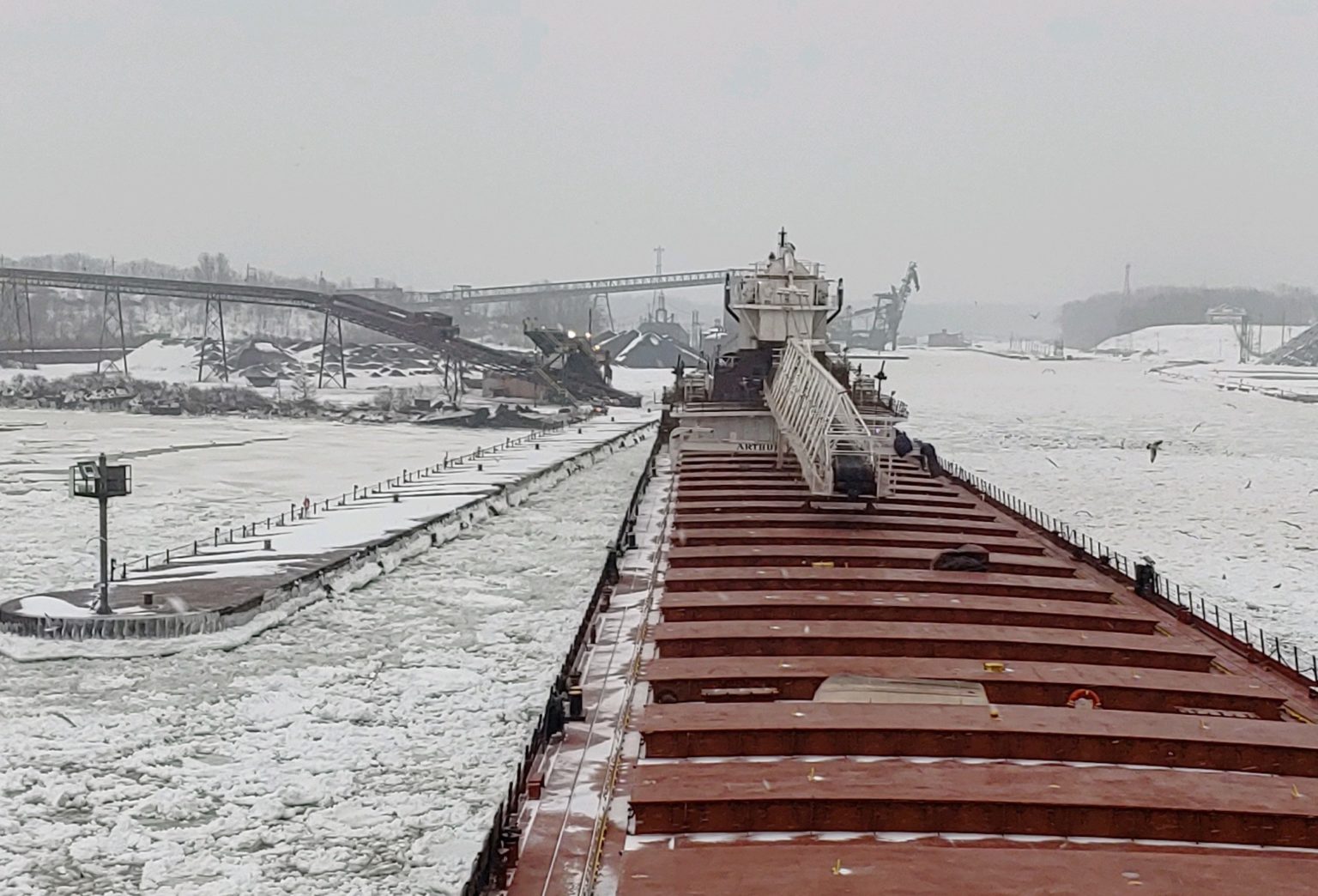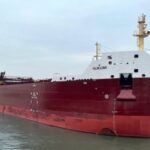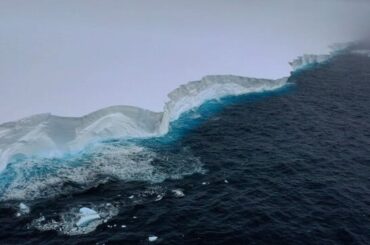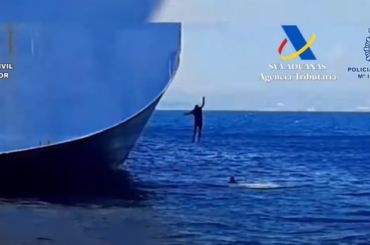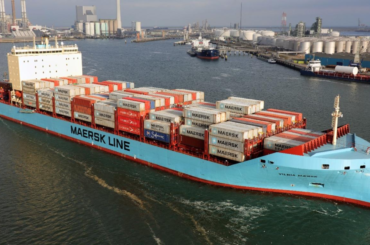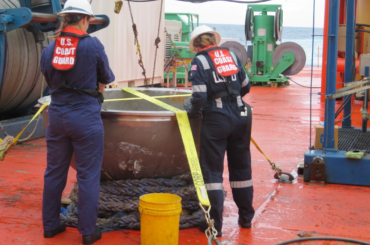According to the Great Lakes Maritime Task Force, a lack of Coast Guard icebreaking assets is hampering U.S.-flag cargo on the Great Lakes.
“The inefficiency introduced into the Great Lakes Navigation System by inadequate Coast Guard icebreaking resources impacts the carriers, their customers and the entire North American Manufacturing supply chain,” said Jim Weakley, President of Great Lakes Maritime Task Force, and the Lake Carriers’ Association.
“The men and women of the U.S. Coast Guard do the best they can with the resources they are provided. Unfortunately, they do not have enough icebreakers to keep the system operating efficiently.”
According to the task force, budget reconciliation legislation now being examined in the United States Senate would provide funding to the Coast Guard for an additional Great Lakes icebreaker.
Despite a relatively mild and delayed start to winter in the Great Lakes, 750,000 tons of iron ore, coal, and cement carrying capacity was delayed, including 20 voyages that were delayed for a total of 325 hours.
Despite the fact that the M/V American Century arrived at the regulatory check-in point in time to meet the Army Corps Locks’ scheduled closure in Sault Ste.
It was beset in the St. Mary’s River at Marie, Mich. (Soo Locks). The vessel was unable to transit through the Soo Locks, which connect Lake Superior to Lake Huron and beyond because icebreakers were unable to free it in time. The last vessels to leave Lake Superior, including the Coast Guard Cutter Biscayne Bay, were delayed in their downbound lockage as a result of this.
There will be no icebreakers on Lake Superior during the lock closure because the Coast Guard Cutter Alder, which is normally stationed in Duluth, Minn., is on the East Coast for an overhaul. The Army Corps of Engineers was obliged to start lock dewatering operations a day later than expected due to ice-related vessel delays.
The icebreaking season usually starts on December 15, but this year’s Operation Taconite, which marks the official start of icebreaking activities in the Northern Great Lakes, didn’t start until December 29.
The US Coast Guard had four of its nine Great Lakes icebreakers in scheduled overhaul, scheduled maintenance, or unscheduled maintenance periods from December 15 to January 15, the scheduled closure date of the Soo Locks.
Due to mechanical failures, five of the company’s eight icebreakers operating on the Great Lakes were unavailable at the same time in January. Due to equipment fires or engine breakdowns, a total of 68 icebreaking cutter days were lost.
John Clemons, Great Lakes Maritime Task Force’s Vice President and with American Maritime Officers, AFL-CIO, said, “The lives of the professional women and men sailing aboard lakers, the safety of the vessels and the protection of the environment depend on adequate Coast Guard icebreakers. In recent years, vessels have been sliced open, forced aground or collided with each other because of inadequate icebreaking resources.”
This year, ice forced one Canadian laker aground in the Straits of Mackinac. It took over 12 hours to get to the next Coast Guard icebreaker. Fortunately, the ship was able to release itself after several difficult hours of struggle.
Despite the fact that the Soo Locks officially closed on January 15, the last U.S.-flag laker is only now arriving at its winter layup birth on January 27. Ships were delayed at ports as well as connected rivers and waterways. The Coast Guard is hamstrung by measures it uses to allocate resources and set mission performance goals, in addition to a lack of operational vessels.
“The Port of Duluth-Superior is the Great Lakes’ top port by tonnage and one of the nation’s top twenty, but the Coast Guard doesn’t consider its waterways as ‘Tier I’ for icebreaking purposes. This is troubling given that Minnesota’s docks along the western edge of Lake Superior provide the iron ore to produce 80 percent of the nation’s first-pour steel. The Head of the Lakes is a vital link in North America’s domestic steel production supply chain,” said Deb DeLuca, executive director, Duluth Seaway Port Authority.
The Coast Guard classifies 35 East Coast ports as tier 1 waterways. They don’t think any of the Great Lakes ports are particularly useful for icebreaking. The Coast Guard only recognizes four connecting waterways as tier 1 on the whole Great Lakes system, none of which are on Lake Superior. On the East Coast, the Coast Guard has 25 ice-breaking vessels, but just nine on the Great Lakes. The Coast Guard would be required to report to Congress on its intentions to increase Great Lakes icebreaking standards and capabilities under the Great Lakes Winter Commerce Act (S.576 and H.R.1561).

